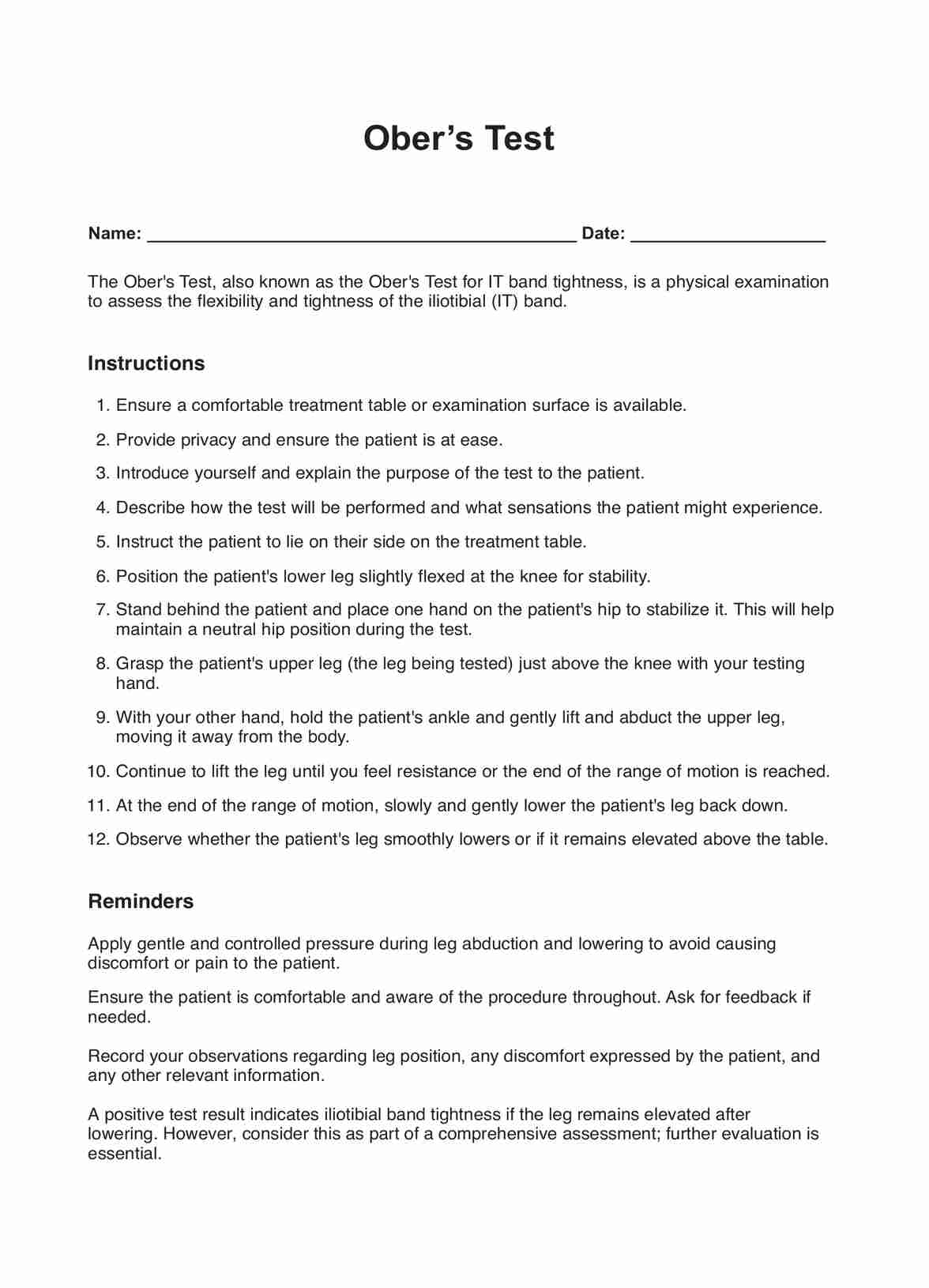To administer Ober's Test, guide the patient through specific movements and note their responses. Begin with the patient lying on their side and the unaffected hip facing upward. Follow the template instructions to conduct the test, observing for signs of restricted hip movement.

Ober’s Tests
Learn about the Ober’s Test, a diagnostic procedure for assessing tightness in the IT band. Download a free PDF guide and example for your practice now.
Ober’s Tests Template
Commonly asked questions
Ober's Test is positive if there is resistance or difficulty lowering the leg towards the examination table, indicating IT band tightness. Negative results suggest no significant restriction. Always consider these findings alongside other assessments and tests for a comprehensive diagnosis.
Ober's Test is a valuable diagnostic tool for assessing IT band tightness. It aids in prompt and accurate evaluation, confirming or ruling out IT band issues, and tracking treatment progress effectively.
EHR and practice management software
Get started for free
*No credit card required
Free
$0/usd
Unlimited clients
Telehealth
1GB of storage
Client portal text
Automated billing and online payments











